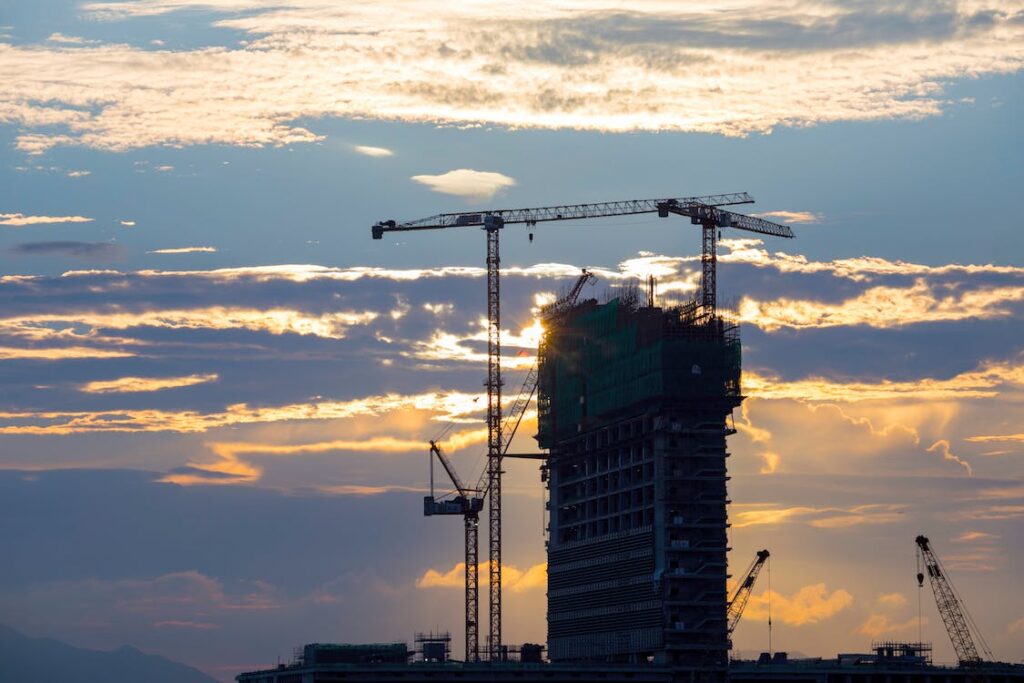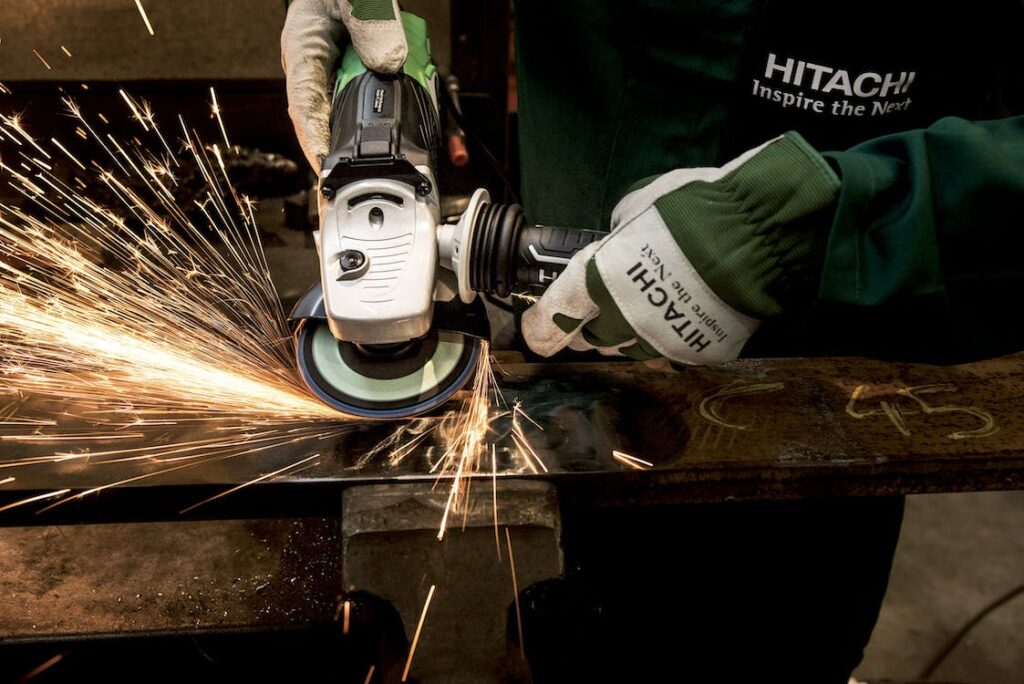In an era marked by technological innovation and rapid advancements in automation, the construction industry is experiencing a transformative shift propelled by robotics. Traditionally characterised by manual labour and heavy machinery, construction sites are now embracing cutting-edge robotics technology to streamline processes, enhance efficiency, and improve safety. From autonomous vehicles and drones to robotic arms and exoskeletons, the integration of robotics in construction holds the promise of revolutionising the way we build and reshape our built environment. In this blog, we delve into the burgeoning field of construction robotics, exploring its applications, benefits, challenges, and future implications.

The Rise of Construction Robotics
The adoption of robotics in the construction industry is not merely a response to contemporary challenges but rather a natural evolution driven by a confluence of factors that have long plagued the sector. For decades, the industry has grappled with persistent issues such as labour shortages, escalating costs, project delays, and safety concerns, all of which have hindered productivity, efficiency, and profitability. These challenges have been exacerbated by demographic shifts, economic fluctuations, and technological stagnation, prompting stakeholders to seek innovative solutions to propel the industry forward into the 21st century.
Enter robotics: a disruptive force poised to revolutionise the way we conceive, design, and build our built environment. By harnessing the power of automation, robotics offers a multifaceted solution to the myriad challenges confronting the construction industry. One of the most immediate benefits of robotics is its ability to automate repetitive and labour-intensive tasks that have traditionally relied on manual labour. Whether it’s bricklaying, concrete pouring, or material handling, robotic systems excel at executing these tasks with unparalleled speed, precision, and consistency, thereby freeing up human workers to focus on more complex and value-added activities.
Robotics technology has the potential to significantly enhance productivity on construction sites by streamlining workflows, optimising resource allocation, and minimising downtime. With robotic systems working around the clock, construction projects can progress at a faster pace, leading to shorter timelines and reduced costs. Additionally, robotics can help mitigate the risk of errors and defects by eliminating human error and ensuring greater accuracy and quality control throughout the construction process.
Robotics holds immense promise for improving safety on construction sites, which have long been characterised by hazardous conditions and high rates of accidents and injuries. By automating tasks that pose significant risks to human workers, such as working at heights, handling heavy machinery, or navigating confined spaces, robotics can help minimise the potential for accidents and fatalities, thereby creating a safer and healthier work environment for all stakeholders.
The transformative potential of robotics in construction is further underscored by advancements in technology that have enabled the development of increasingly sophisticated and versatile robotic systems. Sensors, artificial intelligence, machine learning, and advanced materials have all played pivotal roles in driving innovation and expanding the capabilities of robotics in construction. Sensors and cameras, for example, enable robotic systems to perceive and interact with their environment, while AI and machine learning algorithms enable them to adapt and learn from experience, optimising their performance over time. Additionally, advancements in materials science have led to the development of lightweight and durable materials that are ideally suited for use in robotic construction systems, further enhancing their efficiency and versatility.
Innovative applications of robotics in construction span the entire project lifecycle, from initial site surveying and excavation to final assembly and maintenance. Autonomous drones equipped with LiDAR and photogrammetry sensors can rapidly survey and map construction sites with unprecedented accuracy and detail, providing valuable data for project planning and management. Excavation robots equipped with GPS and advanced guidance systems can autonomously dig trenches, level terrain, and clear debris, speeding up site preparation and reducing the need for manual labour. Robotic arms equipped with 3D printing extruders can fabricate complex architectural elements and structural components directly on-site, eliminating the need for costly and time-consuming prefabrication. And robotic exoskeletons worn by workers can augment their strength and endurance, reducing the risk of fatigue-related injuries and improving overall productivity and efficiency.
Applications of Construction Robotics
Construction robotics encompass a diverse array of applications across various stages of the construction process, each aimed at optimising efficiency, precision, and safety. One of the most prominent applications is in site preparation and earthmoving, where autonomous vehicles and drones are used for surveying, mapping, and excavation. These robotic systems utilise sophisticated sensors and GPS technology to navigate complex terrain, collect data, and perform tasks with unprecedented accuracy and speed.
Another area where construction robotics are making significant strides is in building fabrication and assembly. Robotic arms equipped with advanced end-effectors and computer vision systems are capable of performing intricate tasks such as bricklaying, welding, and 3D printing with precision and efficiency. These robotic systems can work autonomously or collaboratively with human workers, augmenting their capabilities and reducing the time and labour required for construction projects.
Additionally, robotics technology is being leveraged for inspection, maintenance, and repair tasks in the construction industry. Drones equipped with high-resolution cameras and sensors can conduct aerial inspections of structures, identifying defects, cracks, and structural weaknesses with greater accuracy and efficiency than traditional methods. Similarly, robotic exoskeletons and wearable devices are being developed to assist workers in lifting heavy loads, reducing strain and fatigue, and mitigating the risk of injuries on construction sites.
Benefits of Construction Robotics
The integration of robotics in construction offers a multitude of benefits that extend beyond mere efficiency gains. One of the primary advantages is the potential to enhance safety by reducing the exposure of workers to hazardous conditions and repetitive tasks. Robotic systems can undertake high-risk activities such as demolition, excavation, and working at heights, minimising the risk of accidents and injuries.
Moreover, construction robotics have the potential to improve the quality and precision of construction projects, leading to better outcomes in terms of structural integrity, durability, and aesthetic appeal. Robotic fabrication and assembly processes ensure consistency and accuracy, minimising errors and rework and resulting in higher-quality finished products.
Furthermore, robotics technology has the capacity to increase productivity and accelerate project timelines by automating time-consuming and labour-intensive tasks. With robots handling repetitive and monotonous activities, human workers can focus on more complex and value-added aspects of construction projects, leading to greater overall efficiency and project success.

Challenges and Limitations
Despite the myriad benefits of construction robotics, the widespread adoption of this technology faces several challenges and limitations. One of the primary obstacles is the high upfront cost associated with acquiring and implementing robotic systems, including the necessary hardware, software, training, and integration with existing workflows. For many construction companies, especially small and medium-sized enterprises, the initial investment required to adopt robotics technology may be prohibitive.
Additionally, there are technical challenges related to the complexity and variability of construction sites, which may present obstacles to the deployment of robotic systems. Uneven terrain, unpredictable weather conditions, and the presence of obstacles such as debris and vegetation can pose challenges to navigation and operation for autonomous robots and drones.
Moreover, there are concerns surrounding the potential displacement of human workers as a result of automation in the construction industry. While robotics technology has the potential to augment human capabilities and improve safety, there is a need for careful planning and consideration of the social and ethical implications of widespread automation.
Future Implications
Despite the challenges, the future of construction robotics is undeniably promising, with continued advancements in technology and increasing adoption by industry stakeholders. As robotics technology becomes more accessible and cost-effective, we can expect to see greater integration of automation across all aspects of the construction process, from design and planning to fabrication and maintenance.
Furthermore, the convergence of robotics with other emerging technologies such as artificial intelligence, 3D printing, and augmented reality holds the potential to unlock new possibilities and revolutionise the way we design, build, and inhabit our built environment. From robotic drones that can 3D print entire buildings to autonomous construction vehicles controlled by AI algorithms, the future of construction robotics is limited only by our imagination.
In conclusion, construction robotics represent a paradigm shift in the way we approach construction projects, offering unparalleled opportunities to enhance efficiency, safety, and quality while reshaping the built environment. By embracing robotics technology and leveraging its transformative potential, the construction industry can overcome existing challenges and pave the way for a more sustainable, resilient, and innovative future. As we continue to push the boundaries of what is possible with robotics in construction, the possibilities are limitless, and the future is bright.
In the transformative age of construction robotics, WunderBuild emerges as a vital tool, enhancing project management and scheduling to harness the full potential of automation. It’s designed to integrate seamlessly with the robotics revolution, ensuring efficiency, precision, and safety from start to finish. Explore here how WunderBuild can support your construction projects in this new era of innovation.



